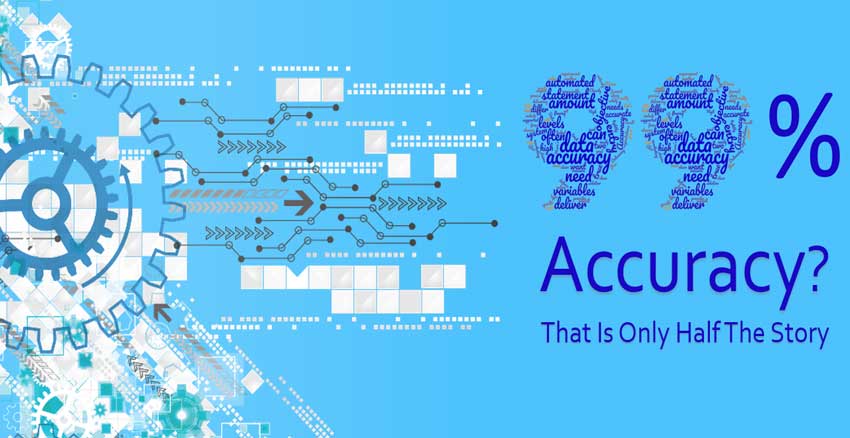99% accuracy is only half the story. The technology industry is rife with grandiose statements that often don’t materialize into expected results. The advanced capture industry is no different. Arguably some of the most common—yet misunderstood—statements out there are those with “99% accuracy.” Even if the statement is completely accurate (pun intended), it is often very misleading. As usual, the real answer is in the details.
What 99% Accuracy Really Means
So what does 99% accuracy really mean? How does it differ from what you want or need? Let’s start with the latter: what you want. The true value of advanced capture—unlike other enterprise applications—is measured in the amount of data that can be extricated from document-based information and flow straight-through into your applications at high levels of accuracy, often above 95%.
For instance, if your organization wants to automate data entry for invoices and needs the invoice date, number and total amount, then your objective is to have as much of this data entry automated as possible and at accuracy levels better than a human. (Surprise, we humans are not very good at providing accuracy!)
So how does the above objective differ from the statement, “99% accuracy”? If you look at the previous paragraph closely, you will notice two variables. One is definitely the data accuracy part. The other variable is often overlooked: the amount of data that can be automated at 99%. If your objective is high levels of automation, the two variables are tightly linked.
Delivering High Accuracy Data
Here’s a trick that is often used in marketing claims: a solution can deliver you 99% accurate data. This claim can be easily supported if you only measure the accuracy of data flowing out of a system. But if you need a specific amount of data to be 99% accurate, then that is another story entirely. A system can deliver 99% accuracy and only deliver 2% of overall data. Clearly, this type of result is not what anyone needs.
How should a requirement statement be framed then? A clearer and more precise need would include both variables such as, “I need more than 85% of my data entry automated delivering 99% accuracy.” This statement provides a clear and measurable goal that defines the true amount of automation. Also, it does not focus solely on data accuracy, but on the entire set of expectations.
So the next time a solution provider claims they can deliver 99% accuracy, ask them, “how much data?”
###
If you found this article useful, you may also find our industry brief interesting, “Misplaced Data Quality Priorities – OCR Accuracy vs. System Performance.”





